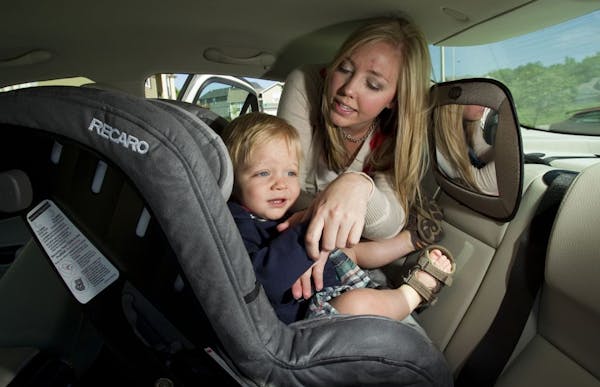A common mistake mentioned at Safe Kids clinics is that car seats aren't secured tightly enough, says Laura Landes, a crime prevention specialist in the Anoka County Sheriff's Office.
Landes shows people how to do the "1-inch test." She has parents pull on the car seat at the base, where it's fastened in place. There needs to be less than an inch of give from side to side or front to back. Often the harness isn't tight enough. "Parents should check the buckle every ride," she said.
After a child is buckled in, the retainer clip and the harness strap need to be tight enough and situated right to prevent a child's head from flying forward in a crash. That also prevents a child from getting ejected from a car seat. "A lot of times you see them high on the belly. They're supposed to be at the armpit level," Landes said.
The heaviest part of a child is that area. The retainer clip keeps the two harness straps together. "It pushes the child back into the car seat during the impact of a crash … It's just a tiny plastic clip, but it's so important that it be in the right area," she said. "It can impact whether it's a minor or serious injury crash."
Also, cars vary quite a bit, and that can affect things. Ideally, children 13 and under should sit in the back seat, but sometimes space doesn't allow for that, Landes said.
In a family with more than one child, it can be tricky to assess who should be in the front or back. "We have to look at the height, weight and ages of the children. Most people aren't able to make that educated decision," Landes said, adding that various factors come into play, such as the make of the vehicle, how the air bag comes out or what kind of latching mechanism it has up front.
Additional information can be found at healthychildren.org, from the American Association of Pediatrics. Among the topics are "Car Seat Checkup" [http://tinyurl.com/n56wml9] and "Car Seats: Information for Families for 2015" [http://tinyurl.com/4ecdplj]
Anna Pratt
8 months in jail for Blaine man who caused 120-mph crash hours after he was caught speeding

Daughter sues St. Paul, two officers in Yia Xiong's killing

